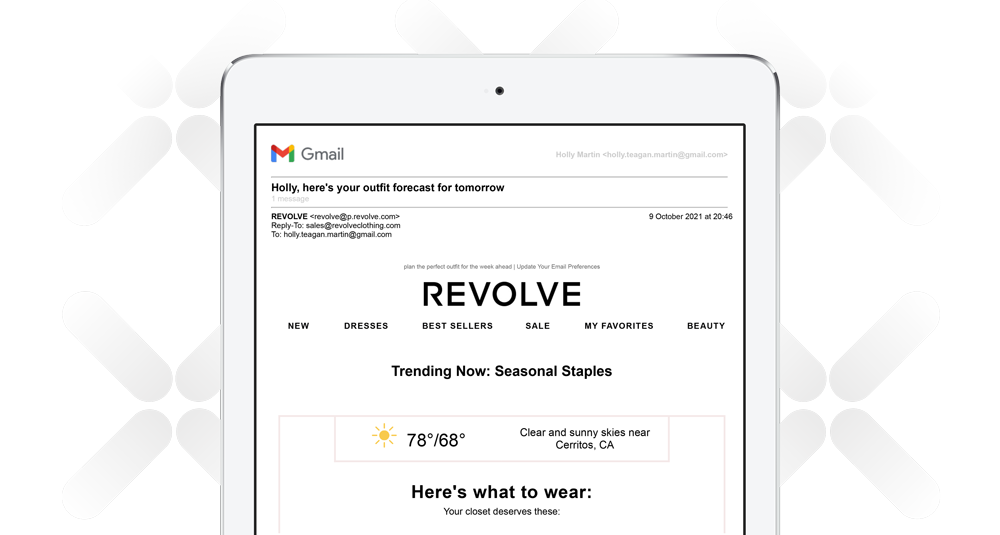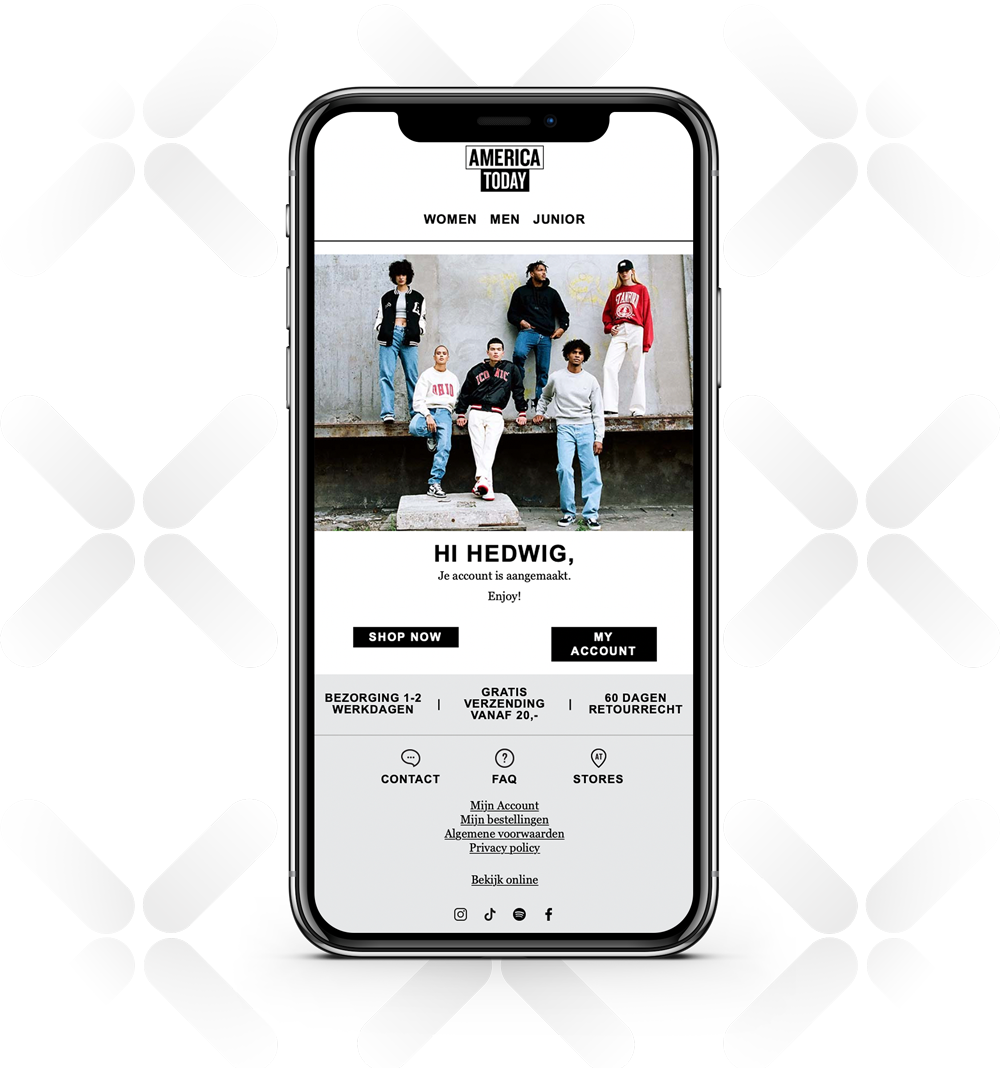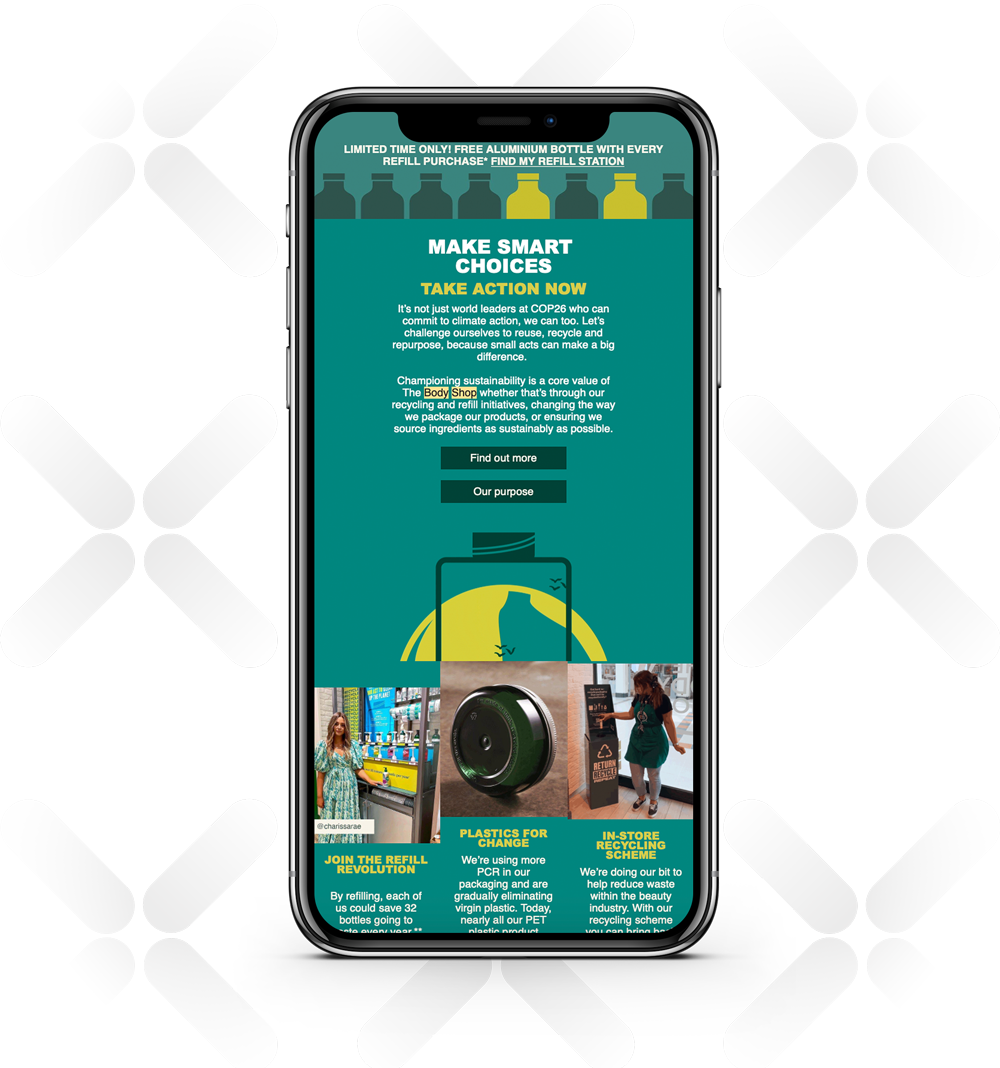EMAIL EXPERIENCE

Personalization

Only 27% used name-based personalization in email subject lines, passing up an opportunity to grab the recipient's attention.
Make email more meaningful by using data to move beyond the sales message
Personalization is a critical tool in building a relationship between a brand and its customers. Sending out a generic email with no identifying information is like forgetting the name of someone you’ve met before at a party. It's a missed opportunity to forge a meaningful connection and can make a subscriber less likely to read further emails. Unfortunately, many companies failed to take advantage of user data for personalization — only 27% used name-based personalization in email subject lines, passing up an opportunity to grab the recipient's attention. There is only one thing worse than not using data at all, and that's using it badly. Some companies that did use names in subject lines mixed up those of the account creator, the delivery recipient, and the name on the billing address. When Omar buys a gift online for his friend Anna, he doesn't expect the retailer to address him as Anna in future communications. Businesses must tag data correctly and instruct marketing teams on how to use it properly in campaigns. This includes taking note of name preferences. Failing to do this will turn users off and potentially negatively impact sales.
EXPERT COMMENTARY:

Identifying clear personas is key when targeting your core customer groups. Use behavioral and transactional data to adapt the experiences you craft in real time. Target specific campaigns to customers based on affinities such as product categories or preferred discounts, along with traffic sources.
Reading between the lines
Savvy brands don't stop at the data they collect directly. Rather than just populating content blocks with explicit name information, they can use implicit data created from a customer's activities, including past product purchase information and website browsing behavior. This enables them to infer more about their customers and tailor segmented campaigns, and the best marketers can do this with almost clairvoyant results. Far too few companies took advantage of this approach, with just 31% joining the dots between customer activities and email personalization. This is a missed opportunity to create more relevant emails and drive engagement.
Just 31% joining the dots between customer activities and email personalization

Barely a third (35%) of brands used editorially-driven emails to increase their value to subscribers.
Exploring editorial content
Product-driving emails based on this implicit behavior are a good way to drive sales, but companies have an opportunity to be even more innovative in their approach. There are plenty of opportunities to personalize emails in thoughtful, subtle ways that add real value for the consumer and build strong relationships. One example is editorial-led email. Personalizing editorial content goes beyond sales, providing the customer with a strong value proposition that can educate and inspire. This approach provides the customer with a stream of high-value, relevant content that makes them far more responsive when you eventually do propose a purchase. Unfortunately, barely a third (35%) of brands used editorially-driven emails to increase their value to subscribers. Instead, most companies took a less subtle approach to personalization by focusing on triggered emails, such as campaigns that reacted to abandoned shopping carts. This limits the value of personalization to short-term goals. A sophisticated approach to personalized email opens up an array of possibilities. Segmented campaigns can target everything from brand champions through to those with a high recency, frequency, and monetary (RFM) score. You can also combine personalized data with marketing automation to build custom journeys for consumers.


What's in a name? Everything, when used properly. Revolve used subject line-based personalization in its emails to speak directly to the recipient, standing out immediately from the flood of other emails in the average recipient's inbox and encouraging them to take a closer look.

America Today went beyond subject line-based personalization by embedding the recipient's first name directly in the welcome email that it sends to customers when they create a new account.



The Body Shop leveraged editorial-led emails that not only drove awareness around their sustainability efforts, but also educated consumers on the benefits of getting involved with the brand's refill programs.
